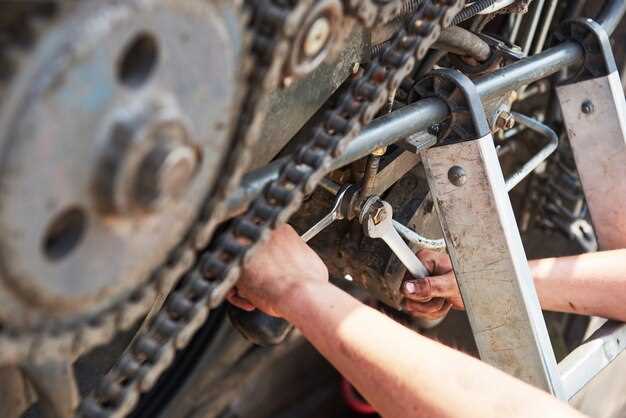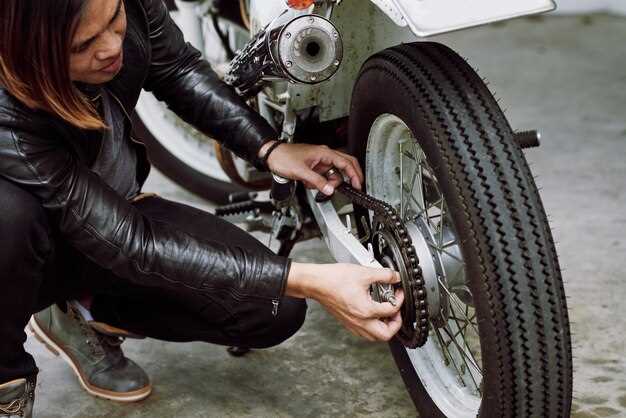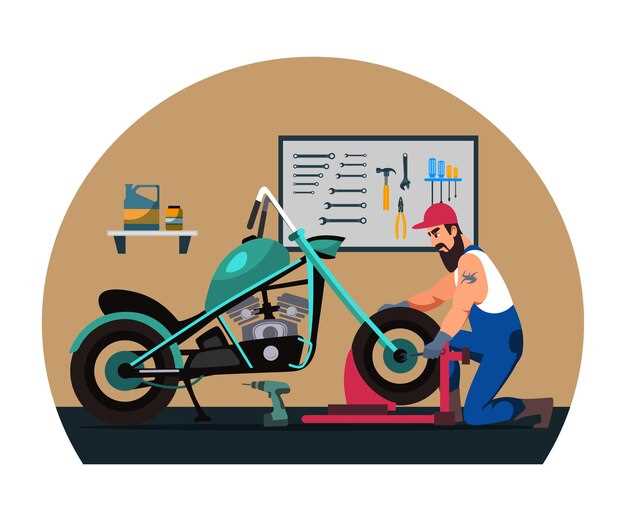
Maintaining your motorcycle’s chain is crucial for ensuring smooth operation and prolonging the lifespan of your bike. A well-lubricated chain not only enhances performance but also improves safety during rides. Regular maintenance of your chain can prevent unnecessary wear and tear, which could lead to costly repairs down the line.
In this guide, we will explore the essential steps for effectively cleaning and lubricating your motorcycle chain. We’ll cover the tools you need, the best cleaning solutions, and the right techniques to ensure your chain operates at peak efficiency. Understanding the importance of proper maintenance can save you time and money while enhancing your riding experience.
Whether you’re a novice rider or a seasoned enthusiast, knowing how to perform routine lube applications and cleanings will empower you to take better care of your motorcycle. With just a little effort, you’ll keep your chain in excellent condition, paving the way for countless enjoyable rides.
Step-by-Step Process for Cleaning Your Motorcycle Chain

Cleaning your motorcycle chain is essential for maintaining optimal performance and prolonging its lifespan. Follow these steps to ensure a thorough cleaning process.
1. Gather Your Tools and Materials: Before you begin, collect all necessary tools, including a chain cleaning brush, cleaning solvent or degreaser, a new chain lubricant, and rags or paper towels. Having everything on hand will streamline the process.
2. Elevate the Motorcycle: Securely raise the rear wheel off the ground using a motorcycle stand. This allows for easy access to the chain and helps ensure safety during the cleaning process.
3. Inspect the Chain: Examine the chain for any visible signs of wear or damage. Look for stiff links, rust, or excessive dirt build-up that may require attention beyond regular cleaning.
4. Apply Cleaning Solvent: Spray or apply a generous amount of chain cleaning solvent onto the entire length of the chain. Let it sit for a few minutes to break down the accumulated grime and debris.
5. Scrub the Chain: Using a chain cleaning brush, scrub the chain thoroughly. Pay special attention to the rollers and side plates, ensuring that all dirt and lubricant residues are removed. Rotate the rear wheel as you work to access different sections of the chain.
6. Rinse and Dry: After scrubbing, rinse the chain with water or wipe it down with a damp rag to remove any remaining cleaning solvent. Use a dry rag to thoroughly dry the chain to prevent rust formation.
7. Lubricate the Chain: Once the chain is clean and dry, apply a suitable chain lubricant evenly along the entire length. Rotate the wheel as you apply lubricant to ensure even coverage on the rollers and side plates.
8. Wipe off Excess Lubricant: After lubricating, use a clean rag to wipe off any excess lubricant that may have dripped. This prevents accumulation of dirt and grime in the future.
9. Reinspect the Chain: Lastly, do a final inspection of the chain to guarantee it is clean, properly lubricated, and in good condition for riding.
Regular maintenance, including cleaning, will ensure your motorcycle chain operates smoothly and efficiently, enhancing your riding experience.
Choosing the Right Chain Lube for Your Motorcycle

Selecting the appropriate chain lube is crucial for effective maintenance of your motorcycle’s chain. The right lubricant reduces friction, minimizes wear, and protects against rust and dirt. Consider factors such as the type of riding you do and the environment in which you ride when making your choice.
There are primarily three categories of chain lubricants: wax-based, spray-on, and heavy-duty oils. Wax-based lubricants form a protective layer that repels dirt and dust, making them ideal for off-road riding. Spray-on lubes, on the other hand, provide ease of application and penetrate well into the chain links, offering great protection against corrosion and wear. Heavy-duty oils are suitable for high-performance motorcycles, as they provide superior lubrication in extreme conditions.
Another essential aspect to consider is the viscosity of the lubricant. Lighter oils are often recommended for high-speed riding, while thicker oils may be necessary for riding in wet or muddy conditions. Always choose a chain lube that is designed specifically for motorcycle chains rather than generic lubricants, as they are formulated to meet the unique needs of chains, offering enhanced performance and longevity.
Lastly, ensure to read the manufacturer’s recommendations on the chain lube before applying it. Proper application and regular maintenance can significantly extend the life of your motorcycle chain, ensuring a smoother ride and improved overall performance.
Common Mistakes to Avoid During Chain Maintenance
One of the most frequent errors riders make is neglecting to clean the chain regularly. Dirt and debris can accumulate quickly, leading to premature wear and tear. Make sure to establish a cleaning schedule based on your riding conditions.
Another mistake is using the wrong type of lubricant. Not all lubes are created equal; some may attract more dirt or fail to provide adequate protection. Always choose a lube specifically designed for motorcycle chains to ensure optimal performance.
Over-lubricating the chain is also a common pitfall. Excessive lube can fling off during riding, creating a mess and attracting more dirt. Apply lube sparingly and wipe off any excess to maintain a clean chain.
Failing to inspect the chain for wear is another error that can lead to significant problems. Regular checks for elongation, rust, or damage are essential to catch issues early and avoid costly replacements.
Riders often overlook the importance of adjusting chain tension. A chain that is too loose or too tight can lead to handling problems and accelerated wear. Regularly checking and adjusting the tension can prolong the life of your chain.
Finally, using high-pressure water hoses for cleaning can be detrimental. The force can displace lubricants and disturb the sealing of o-rings, leading to faster degradation. Always clean using a gentle approach to protect the integrity of your chain.
